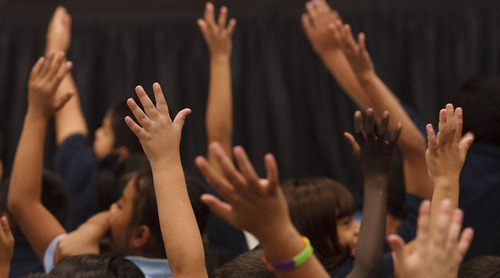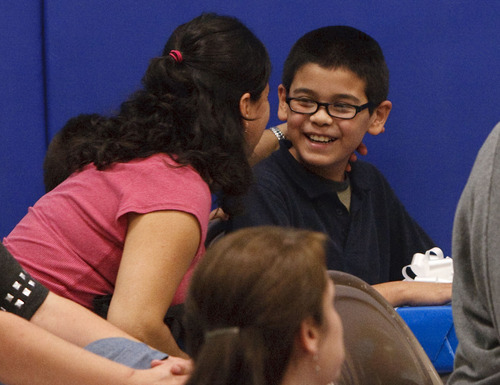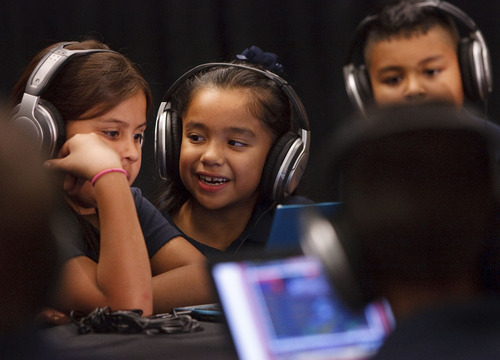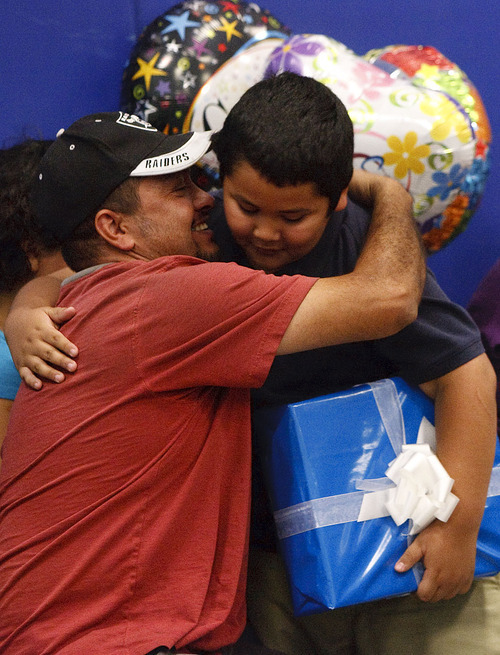This is an archived article that was published on sltrib.com in 2012, and information in the article may be outdated. It is provided only for personal research purposes and may not be reprinted.
Teacher Melanie Clayton is careful when she assigns homework that involves Internet research to her fourth-grade students.
For many students in Utah, going home to log online is a given: Access to a laptop for school projects is as commonplace as having a bed to sleep in or food to eat.
But that's not the case at Edison Elementary on Salt Lake City's westside, where Clayton teaches. Of the approximately 638 students enrolled at the school, 94 percent are categorized as economically disadvantaged, 87 percent are minorities and close to 70 percent of the student population are English language learners.
The school's high poverty rate means many students don't have the luxury of a home wired with Internet service. And for many of Edison's children, school is the only place where they can find technology, unlike peers in wealthier schools who may have the latest tech devices at their fingertips.
"Something that's been really difficult is to have that expectation for them to be able to go home and use technology," said Clayton. "I can't expect them to have a computer, and even if they have a computer, I can't expect them to have the Internet at their house."
But a Thursday donation from Comcast made a small dent in the school's ongoing challenge with connecting kids to technology, when five students unwrapped big blue-and-white packages to find a brand new netbook computer.
The donation is part of Comcast's Internet Essentials Program, which is entering its second year in the Salt Lake City School District. The communications company donated a total of 22 netbook computers to Edison, including five computers that were given to one student in grades kindergarten through five based on academic improvements shown in language arts. Comcast also provided Edison with 15 cameras that will assist teachers with grading tests and lesson planning.
The donations thrilled many students in attendance at a Thursday event where the technology was distributed.
"I'm freaking out," said fifth-grader Oscar Quintanar, after receiving his new computer. "I always wanted one of these."
Edison Principal Tracy Vandeventer said introducing the school's students to technology is an ongoing process.
"I recognize that many of our students don't have access [to technology at home]," she said. "We're working on ways to get kids in front of computers every day."
Clayton said teachers use technology in the classroom, but often send students home with "old fashioned" paper and pencil projects for homework.
Assignments at home are often a "black and white experience" for Edison students, said special education teacher Jane Anne Hartford. She said reading assignments often times are made on a copy machine at school and sent home with students, because teachers know their kids don't have a way to access material on the Internet.
"Would it make it a whole lot easier for them to access what the rest of the world is accessing? Absolutely," Hartford said. "It would open doors for them that right now they have to climb up the stairs to open."
But even so, Hartford said, students can overcome the digital divide.
"I think people can learn with whatever is given to them," she said. "Learning is what you decide to do with it."
In the case of fourth-grader Isaac Herrera —one of Hartford's students —that philosophy appears to be true. Herrera was one of Edison's most improved students who received a free netbook. He improved more than any of his classmates, overcoming a learning disability in the process, Hartford said.
"He really worked hard and went the extra mile, and it paid off for him," she said of Herrera.













